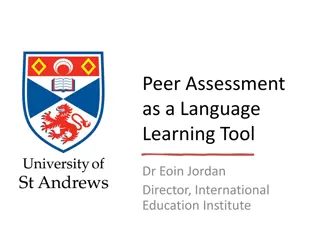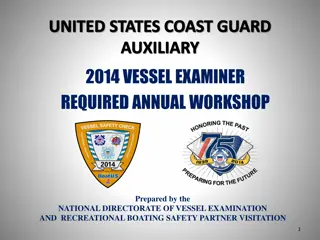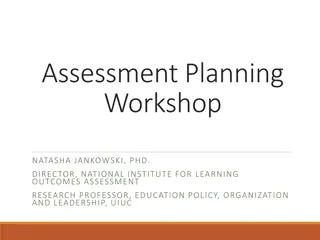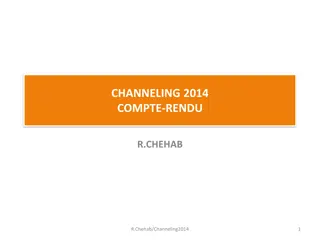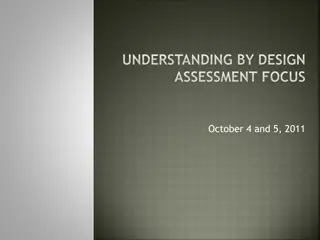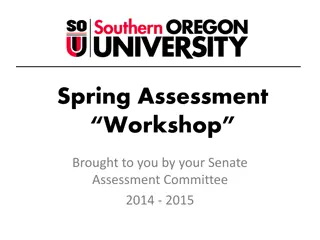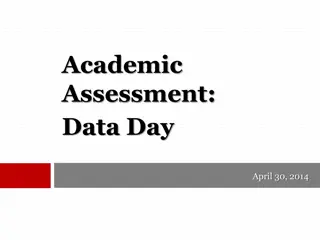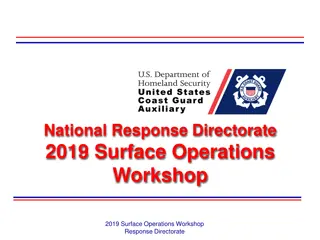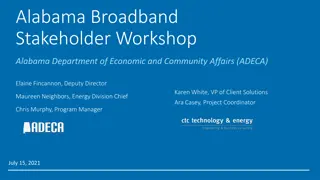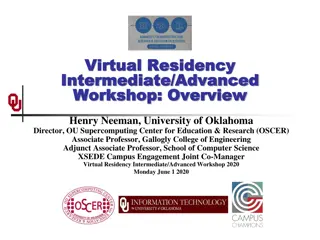
Understanding Operational Assessment and Improvement Methods
Dive into the world of operational assessment with a focus on planning, implementing, and reporting for continuous improvement. Explore the systematic collection, review, and utilization of information to enhance organizational operations effectively.
Download Presentation

Please find below an Image/Link to download the presentation.
The content on the website is provided AS IS for your information and personal use only. It may not be sold, licensed, or shared on other websites without obtaining consent from the author. If you encounter any issues during the download, it is possible that the publisher has removed the file from their server.
You are allowed to download the files provided on this website for personal or commercial use, subject to the condition that they are used lawfully. All files are the property of their respective owners.
The content on the website is provided AS IS for your information and personal use only. It may not be sold, licensed, or shared on other websites without obtaining consent from the author.
E N D
Presentation Transcript
Welcome and introductions Assessment Overview Assessment Cycle Purpose of the Assessment Plan Putting it into action Completing the Assessment Report Discussion 2
Understand on-going operational assessment at GBC and why you want to assess your operations and what resources are available to you. Understand how to plan assessments of the major activities of your department or program and how to put them into action. Understand how to report on your assessment activities including interpreting the results and identifying when changes will be put into place for improvement. 3
Definition: The systematic collection, review and use of information about departments and functions for the purpose of improving operations. Assessment requires: 1) establishing clear, measurable outcomes 2) identifying appropriate measurement techniques 3) acting on the results 4
Define Define Act Act Plan Plan Report Report Analyze Analyze 5
Assessment Plans: 1) Define the major activities or outcomes of your program or department 2) Identify the measurement techniques you will use to assess how well you are doing those activities 3) Sketch out what needs to be in place in order to complete the assessment 6
List the major activities that arise from your mission Identify your stakeholders State how you determine the quality of your work or what you want to achieve 7
SMART outcomes: Specific what do you do, who is involved, why, where? Measurable how will you know when it s accomplished? What data? Achievable how will you do it? Relevant does it relate to the College mission and vision? Your division goals? Time-bound when will this be done? 8
Mission: The mission of Institutional Research and Effectiveness is to foster a culture of evidence by facilitating the management, analysis, reporting and use of data and information in support of planning, assessment and decision-making. 9
Support institutional efforts in strategic planning and assessing institutional effectiveness. Support academic and service departments and functions in assessing, improving, and reporting on the effectiveness of the their programs. Serve as an official data provider to the state of Nevada, the federal government and other external entities. 10
GBC Leaders and managers GBC Students NSHE and Board of Regents Federal Government All GBC personnel 11
Stakeholders are satisfied with our services Information and data are timely, accurate, relevant, reliable, comparable and accessible Surveys are completed with meaningful results and good response rates Numbers are translated into information and are easily found 12
How do we serve our primary stakeholders? Outcome = stakeholders + quality statement + major function GBC departments and programs have the resources (guidelines, deadlines, metrics) they need to complete their assessment activities. 13
Survey Results: National satisfaction surveys Noel-Levitz SSI GBC annual survey of graduates Focus groups Pre- and post-activity questionnaires Point-of-contact questionnaires 14
Internal tracking worksheets processing time number of errors or exceptions volume cost location range or variety 15
Grading based on an internal rubric Does not meet expectations Meets expectations Exceeds expectations Compliance with external standards such as audit findings 16
How do you know youve accomplished the outcome? At what point will you be satisfied that you ve succeeded? IRE Example: 80% of workshop attendees report improvement in knowledge of assessment and feel better able to assess their operations. 17
Do you need to develop your assessment measure before you can use it? How long will that take? How long will analysis of the results take? Sketch out an action plan to put your assessment(s), analysis and any anticipated improvements into place. Measure and analyze one semester or year and implement changes the next. 18
Annual Assessment Reports: 1) Document the assessment measures you used and their results 2) Provide an analysis and interpretation 3) Identify any action needed and/or taken to make improvements 4) Follow-up on action taken with a plan for assessing the changes 19
Do you do what you say you do? How well do you do it? How do you know? Can you prove it? What are you going to do to about it? 20



